
Bartmann Total Solutions in Steel Buildings
| Glossary of Building and Inspection Terms | |
|
|
|
| A B C D E F G H I J K L M N O P Q R S T U V W X Y Z | |
| ADA | The Americans with Disabilities Act |
| AIR CONDITIONING | The process of treating air so as to control simultaneously its temperature, humidity, cleanliness, and distribution to meet comfort requirements of the occupants of the building's conditioned space. |
| AIR DUCT | A pipe, usually made of sheet metal, or flexible material, that conducts air to rooms in a home or building from a central source. |
| AIR TRAP | A U-shaped pipe filled with water and located beneath plumbing fixtures to form a seal against the passage of gases and odors. |
| ALCOVE | A recessed space connected at the side of a larger room. |
| ALLIGATORING | A defect in roofing material consisting of intersecting cracks and ridges in the surface. |
| AMPERE | The unit used in the measure of the rate of flow of electricity. Informally called "Amp." |
| ANCHOR BOLT | A threaded rod inserted in masonry construction for anchoring the sill plate to the foundation of a home. |
| ARBOR | A light, open structure having a lattice framework, usually supporting intertwined vines or flowers. |
| ARCADE | A series of arches supported by a row of columns. |
| ARCH | A curved structure that will support itself by mutual pressure and the weight above its curved opening. |
| ASHI | Acronym for American Society of Home Inspectors. |
| ASHPIT | The area below the hearth of a fireplace that collects the ashes. |
| ASPHALT | Bituminous sandstones used for paving streets and waterproofing flat roofs. |
| ASPHALT SHINGLES | Composition roof shingles made from asphalt-impregnated felt covered with mineral granules. |
| ASTM | The American Society for Testing and Materials. |
| ATRIUM | An open court within a building or home. |
| ATTIC | The accessible space between the ceiling framing of the topmost story and the underside of the roof framing. Inaccessible areas are considered "structural cavities and are not subject to inspection." |
| AWNING WINDOW | An out-swinging window hinged at the top. |
| BACKFILL | Replacement of excavated earth into a pit or trench, or against a building. |
| BACKHEARTH | The part of the hearth inside the fireplace. |
| BALCONY | A deck projecting from the wall of a building above the ground. |
| BALLOON FRAMING | The building-frame construction in which each of the studs is one piece from the foundation to the roof of a two-story house. |
| BALUSTER | One of a number of short vertical members, often circular in section, used to support a stair handrail or a balcony guardrail. |
| BALUSTRADE | A series of balusters or posts connected by a rail, generally used adjacent to stairs. |
| BANISTER | A handrail for a staircase. |
| BAROMETRIC DAMPER | An automatic adjustable device for regulating the draft through a fuel-burning appliance, thereby making operation of the appliance nearly independent of the chimney draft over its normal range of operation. |
| BARGEBOARD | Finish board covering the projecting and sloping portion (end rafter) of a gable roof. |
| BASEBOARD | Finish board covering the interior wall where the wall and floor meet. |
| BATT | A type of fiberglass insulation, which is designed to be installed between a building's framing members. |
| BATTEN | Narrow strip of wood nailed over the vertical joints of boards to form board-and-batten siding. |
| BAY WINDOW | A projection formed by three windows that are joined at obtuse angles. |
| BEAM | A horizontal structural member in a building that carries a load. |
| BEAM CEILING | A ceiling in which the ceiling beams are exposed to view. |
| BEARING WALL OR PARTITION | A wall supporting any vertical load in a building other than its own weight. |
| BLANKET INSULATION | Insulation in rolled-sheet form, often backed by treated paper that forms a vapor barrier. |
| BLOCKING | Small wood framing members that fill in the open space between the floor and ceiling joists to add stiffness to the floors and ceiling. |
| BLUEPRINT | An architectural type drawing used by workers to build from. The original drawing is transferred to a sensitized paper that turns blue with white lines when printed. Also, prints of blue lines on white paper. |
| BOARD | Lumber less than two inches thick. |
| BOARD AND BATTEN | A type of siding composed of wide boards and narrow battens. The boards are nailed to sheathing so that there is one-half inch space between them. The battens are nailed over the open spaces between the boards. |
| BOND BEAM | Horizontal beam poured inside the U block for reinforcement of block walls in commercial or residential buildings. A bond beam is made by filling the block cells with either grout or insulation up to the level of the bottom of the U block. Reinforcing steel is placed, and the U block is filled with grout.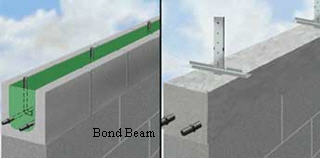 |
| BONDING | Joining of metallic parts to form a conductive path that has the ability to safely conduct electrical loads. |
| BOW WINDOW | A curved projection from a building formed by five or more windows that are joined at obtuse angles.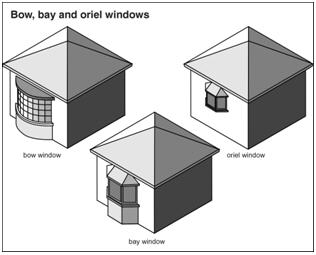 |
| BRACE | Any stiffening member of a building's framework. |
| BREEZEWAY | A roofed walkway with open sides. It connects the house and garage. |
| BRICK TIE | Metal anchors installed to secure brick veneer to the exterior wall.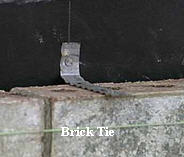 |
| BRIDGING | Cross bracing or solid blocking between joists to stiffen floor framing. |
| BUILDING PERMIT | A permit issued by a municipal government authorizing the construction of a building, house, or other structure. |
| BUILT-UP ROOF | A continuous roof covering made up of laminations or plies of saturated or coated roofing felts, alternated with layers of asphalt and surfaced with a layer of gravel or a cap sheet; generally used on flat or low-pitched roofs on both commercial buildings and homes. |
| BUTTERFLY ROOF | A roof with two sides sloping down toward the interior of the building. A critical inspection of a home with this style roof is essential.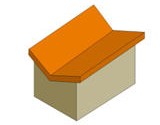 |
| BUTT JOINT | The junction where the ends of two timbers or other members meet in a square-cut joint. |
| BUTTRESS | Vertical masonry or concrete support, usually larger at the base, which projects from a wall in a building. |
| BTU | Abbreviation for British thermal unit; a standard unit for measuring heat gain or loss. |
| BX CABLE | Armored electric cable wrapped in plastic and protected by a flexible steel covering. |
| CAISSON | A sunken panel or coffer in ceilings, vaults, and domes; the term is also used for concrete cylindrical foundations or tubular piers filled with concrete. |
| CANTILEVER | A structural member or surface that projects horizontally beyond its vertical support.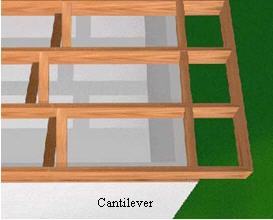 |
| CANT STRIP | Angular shaped member used to eliminate a sharp, right angle, often used on flat roofs on commercial buildings. |
| CARPORT | An automobile shelter not fully enclosed. |
| CASEMENT WINDOW | A hinged window that opens out, usually made of metal. |
| CATCH BASIN | An underground structure for drainage into which the water from a roof or floor will drain. It is connected with a sewer drain or sump pump. |
| CAULKING | Soft, elastic material used to seal small openings around doors, windows, etc. |
| CAVITY WALL | An exterior wall, usually of masonry, consisting of an outer and inner withe separated by a continuous air space, but connected together by wire or sheet-metal ties. The dead air space provides improved thermal insulation. |
| CHASE | Vertical space within a building or home for ducts, pipes or wires. |
| CHECK | A small crack running parallel to the grain in wood and across the rings; usually caused by shrinkage during drying. An inspector should determine if it is structurally significant. |
| CHECKING | Small cracks at closely spaced but irregular intervals on the surface of mortar, concrete or paint. |
| CHIMNEY | A non-combustible vertical structure within or adjoining a building or home containing one or more flues to provide draft for fireplaces, and to carry off gaseous products of combustion to the outside air from fireplaces, furnaces, or boilers. |
| CHIMNEY CAP | The crowning termination of a chimney, usually constructed of concrete, stone or metal; that is installed to prevent water from penetrating the top of a masonry chimney. |
| CHORD | Top or bottom member of a truss. |
| CINDER BLOCK | A building block made of cement and cinder. |
| CIRCUIT BREAKER | An electric device for opening and closing a circuit, designed to open the circuit automatically upon flow of a predetermined value of abnormally high current; may be repeatedly reclosed and reused as an automatic overcurrent protection device without replacement of any components. |
| CISTERN | A tank or other reservoir to store rainwater run off. |
| CLAPBOARD | A board, thicker on one side than the other, used to overlap an adjacent board on a building or home's siding. |
| CLEAN OUT | A plugged opening to drainlines and some traps to facilitate removal of a blockage with a plumber's snake or auger. |
| CLERESTORY | An outside wall of a home or building that rises above an adjoining roof and contains windows. |
| CMU | Concrete Masonry Unit made from Portland cement and aggregate. |
| COLD AIR RETURN | Large ducts that lead cold air, or return air, to a furnace. |
| COLD JOINT | A joint formed when a concrete surface hardens before the next batch of concrete is placed against it. |
| COLLAR BEAM | A horizontal member, which ties together (and stiffens) two opposite common rafters, usually at a point about halfway up the rafters. |
| COMMERCIAL BUILDING INSPECTION | The process by which an inspector visually examines the readily accessible systems and components of a building used for commercial purposes and which describes those systems and components in a property condition assessment report. |
| COMMON WALL | A single wall that serves two dwelling units in a building. |
| CONCRETE | A mixture of cement, sand, gravel, and water. |
| CONCRETE BLOCK | Precast hollow or solid building blocks of concrete. |
| CONDENSATION | The formation of frost or drops of water on inside walls, and when warm vapor inside a room meets a building's cold wall or window. |
| CONDUCTOR | In architecture, a drain pipe leading from the roof; in electricity, anything that permits the passage of an electric current. |
| CONDUIT | A channel built to convey water or other fluids; a drain or sewer. In electrical work, a channel that carries wires for protection and for safety. |
| CONTROL JOINT | A groove which is formed, sawed, or tooled in a concrete or masonry building to regulate the location and amount of cracking and separation resulting from the dimensional change of different parts of the building. |
| CORBEL | In masonry, a projection or one of a series of projections, each stepped progressively outward with increasing height, and usually projecting from a wall or chimney; serves as a support for an overhanging member or course.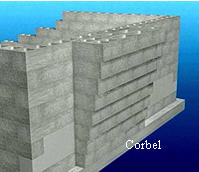 |
| CORNER BEAD | A metal molding built into plaster corners to prevent the accidental breaking off of the plaster. |
| CORNICE | Molded projection of the roof overhang at the top of a building's wall. |
| COUNTERFLASHING | A strip of sheet metal, often built into masonry and turned down over other flashing; used to prevent water from entering the joints and the exposed upturned edges of base flashing on a roof.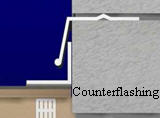 |
| COURSE | A layer of masonry units running horizontally in a wall, or a continuous row or layer of material such as shingles, tiles, etc. |
| COURT | An open space surrounded partly or entirely by a building. |
| COVE | Concave molding usually used on horizontal inside corners. |
| CRAWL SPACE | In a building or home without a basement, an unfinished accessible space below the first floor which is usually less than a full story in height; normally enclosed by the foundation wall. |
| CRICKET | A small saddle-shaped projection on a sloping roof; used to divert water around an obstacle such as a chimney. |
| CROSS BRACING | Boards nailed diagonally across studs or other boards to make framework rigid. |
| CROSS BRIDGING | Bracing between floor joists to add stiffness to the floors. |
| CROSS CONNECTION | Any plumbing arrangement that allows flow between potable water and a contaminant such as drain water, a gas, a chemical, or even steam. Cross connections are found in many building locations, including: boilers, lawn irrigation systems, between public and private water systems, at bidets, in toilet tanks, and at bathtubs. |
| CROWN MOLDING | Molding used above eye level, usually the upper trim on interior walls. |
| CULVERT | A passage for water below ground level. |
| CUPOLA | A domed structure on a building or home, often set on a circular or polygonal base on a roof or set on pillars; often glazed to provide light in the space below, or louvered to provide ventilation in that space. |
| CURTAIN WALL | In a tall commercial building of steel-frame construction, an exterior wall that is non-load-bearing, having no structural significance. |
| CUT AND FILL | The process of cutting into a hillside and using the material removed to fill a downslope portion of the site. Because the newly filled portion is less dense and compacted, buildings or homes constructed across the "cut and fill" line are often cracked or distorted at that location. |
| DAMPER | A device used to vary the volume of air passing through an air outlet, inlet, or duct. It does not significantly affect the shape of the delivery pattern. A pivoted cast-iron plate at a fireplace throat to regulate draft. |
| DECORATIVE | Components not required for the operation of a home's essential systems and outside the scope of a home inspection. |
| DENTIL | One of a series of small projecting rectangular blocks forming a molding under an overhang, most common in Colonial-style homes. |
| DESCRIBE | To identify in a home inspection report in writing a system or component by its type or distinguishing characteristics. |
| DIELECTRIC FITTING | In a home or commercial building's water supply system, a special type of adapter (such as a union) used to connect a pipe containing copper with a pipe containing iron; used between dissimilar metals to prevent galvanic action from causing corrosion failure. |
| DIFFERENTIAL SETTLEMENT | Relative movement of different parts of a building or home caused by uneven sinking of the structure. |
| DIMENSIONAL LUMBER | Lumber as it comes from the saws, two inches thick and from four to twelve inches wide; also, lumber cut to standard sizes or to sizes ordered. |
| DISMANTLE | To take apart or remove any components, device, or piece of equipment that would not be taken apart or removed by a homeowner in the course of normal home maintenance. It is beyond the scope of a home inspector conducting a home inspection. |
| DORMER | A structure projecting above a sloping roof on a home, usually housing a vertical window. It is not part of the roof structure, but is framed separately, and often provides daylight and ventilation for a room located in a garret or loft space. |
| DOUBLE GLAZING | A pane made of two pieces of glass with air space between and sealed to provide insulation. |
| DOUBLE HEADER | Two or more timbers joined for strength. |
| DOUBLE HUNG | A window having top and bottom sashes, each capable of movement up and down. |
| DOWNSPOUT | Pipe for carrying rainwater from the roof to the ground or storm drainage system; also called a leader. |
| DRAFT HOOD | A device placed in and made part of the vent connector, chimney connector, or smokepipe, from an appliance, or in the appliance itself. It is designed to ensure the ready escape of the products of combustion. |
| DRAIN | A pipe for carrying waste water out of a building. |
| DRIP EDGE | A piece of metal placed over the building or home's roof sheathing at the perimeter to deflect water away from the sheathing and fascia board. |
| DRY ROT | A term applied to many types of decay, especially an advanced stage, when the wood can be easily crushed to a dry powder. |
| DRY-WALL CONSTRUCTION | Interior wall covering other than plaster, usually referred to as "gypsum board" or "wallboard." |
| EAVE | Lower portion of the roof that overhangs the exterior walls of a house or commercial building. |
| EFFLORESCENCE | An encrustation of soluble salts, commonly white, deposited on the surface of concrete, brick, mortar, stone or stucco; usually caused by free alkalies leached from concrete or mortar as moisture moves through it. Efflorescence is an important symptom used by home and building inspectors to determine moisture intrusion. |
| EFFLUENT | The liquid discharge from a septic tank after bacterial treatment. |
| EIFS | Acronym for Exterior Insulation and Finishing System. Also known as synthetic stucco or Dryvit. An exterior finish for a building or home composed of polystyrene foam covered with a synthetic stucco. This type of stucco (in contrast to traditional, porous cement-based stucco) is waterproof and is sprayed on. |
| ELEVATION | The drawings of the front, sides, or rear face of a commercial building or home. |
| ELL | Extension or wing of a building or house at right angles to the main section. |
| ENGINEERING | The application of scientific knowledge for the design, control, or use of building structures, equipment, or apparatus. Engineering evaluations are beyond the scope of a commercial building inspection or a home inspection. |
| ESCUTCHEON | A flange on a pipe, used to cover a hole in a floor or wall through which the pipe passes. The hardware on a door to accommodate the knob and keyhole. |
| EXCAVATION | Cavity or pit produced by digging the earth in preparation for building or home construction. |
| EXPANSION JOINT | Flexible joint used to prevent cracking or breaking due to thermal expansion and contraction. |
| FACADE | Face or front elevation of a building or home. |
| FASCIA | Outside horizontal face of member on the edge of a roof or cornice. |
| FELT PAPER | Papers, sometimes tar-impregnated, used on roofs and sidewalls to give protection against dampness and leaks. |
| FENESTRATION | Arrangement and sizing of doors and windows in a building or home. |
| FILLED INSULATION | A loose insulating material poured from bags or blown by machines into walls. |
| FIREBRICK | A brick that is especially hard and heat-resistant. Used in fireplaces. |
| FIRE DOOR | A fire-resistive door assembly, including frame and hardware, which is capable of providing a specified degree of fire protection when closed. Usually provided with an automatic closing mechanism, in the event of fire. |
| FIRE-STOP | In a concealed, hollow construction, a material or member which fills or seals the open construction to prevent or retard the spread of fire through a building or home. |
| FLASHING | A thin impervious material placed in construction to prevent water penetration and/or provide water drainage, esp. between a roof and wall, and over exterior door openings and windows of a building or home. |
| FLUE | A non-combustible, heat-resistant enclosed passage in a chimney to control and carry away products of combustion from a fireplace or furnace to the outside air. |
| FLUE LINING | Terra-cotta pipe used for the inner lining of chimneys. |
| FOOTING | That portion of the foundation of a building or home which transmits loads directly to the soil; may be the widened part of a wall or column. Used to spread the load over a greater area to prevent or reduce settling. |
| FOOTING FORM | A wooden or steel form used to hold concrete to the desired shape and size until it hardens. |
| FOOTPRINT | The outline of a commercial building or home's foundation; this means the building or home's outermost points, and is used for site planning. |
| FRAMING | Wood skeleton of a building or house constructed one level on top of another. |
| FRENCH DOOR | A wood door paneled with panes of glass, often used in pairs.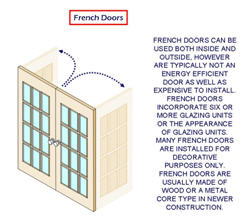 |
| FRIEZE BOARD | Trim member below the cornice that is fastened against the wall. |
| FURRING STRIPS | Thin strips fastened to walls or ceilings for leveling and for attaching finish surface material. |
| FURTHER EVALUATION | Examination and analysis by a qualified professional, tradesman, or service technician, beyond that provided by an inspector in a home inspection or a commercial building inspection. |
| FUSE | A strip of soft metal inserted in an electric circuit and designed to melt and open the circuit should the current exceed a predetermined value. |
| GABLE | The vertical triangular end of a building or home, from the eaves to the ridge.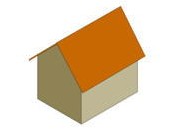 |
| GALVANIC CORROSION | An electrochemical action which takes place when dissimilar metals are in contact in the presence of an electrolyte, resulting in corrosion. |
| GALVANIZE | A lead and zinc bath treatment to prevent rusting. |
| GALVANIZED PIPE | A steel or iron pipe which has been galvanized by coating it with a thin layer of zinc. |
| GAMBREL ROOF | A roof style on a home with 2 slopes on each side, the lower slope steeper than the upper.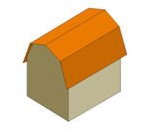 |
| GARRET | An attic in a home. |
| GINGERBREAD | Highly decorative, elaborate woodwork used in architecture, especially in the trim of a house. |
| GIRDER | A horizontal beam supporting the floor joists in a building or home. |
| GLAZING | Installation of glass in windows and doors in a building. |
| GRADE | (1) Finished surface of ground around a commercial building or home. (2) Refers to classification of the quality of lumber or plywood. |
| GRADIENT | Inclination of a road, piping, or the ground, expressed in percent. |
| GRAVEL STOP | Strip of metal with a vertical lip used to retain the gravel around a built-up roof. |
| GREEN LUMBER | Lumber that still contains moisture or sap. |
| GROUND | Intentional or accidental connection (bonding) between a circuit or equipment and the earth or other conducting material. |
| GROUND-FAULT CIRCUIT INTERRUPTER (GFCI) | An electrical device that breaks an electric circuit when an excessive leakage current is detected. Intended to eliminate shock hazards to people. |
| GROUT | Thin cement mortar used for leveling and filling masonry cavities. |
| GUSSET | Plywood or metal plate used to strengthen joints of a truss. |
| GUTTER | Metal or wood trough on a building or home for carrying rainwater to downspouts. |
| HANGER | Metal strap used to support the ends of joists or piping. |
| HEADER | In home or commercial building framing, the continuous joist placed across the ends of floor joists, the double joists at each end of floor or ceiling openings attached to the trimmers, and the structural member above window or door openings. In masonry, exposed ends of masonry units laid horizontally. |
| HEARTH | That part of the floor directly in front of the fireplace, and the floor inside the fireplace on which the fire is built. It is made of fire-resistant masonry. |
| HEEL PLATE | A plate at the ends of a truss. |
| HIP RAFTER | Diagonal rafter that extends from the plate to the ridge to form the hip. |
| HIP ROOF | A roof style on a home with sloping ends and sloping sides that meet at a ridge. |
| HOME INSPECTION | The process by which an inspector visually examines the readily accessible systems and components of a home, and describes those systems and components in a home inspection report. |
| HOSE BIBB | Water faucet made for the threaded attachment of a hose; also called a sill-cock. |
| HUMIDIFIER | A mechanical device that controls the amount of water vapor to be added to the atmosphere of a home or building. |
| HUMIDISTAT | An instrument used for measuring and controlling moisture in the air. |
| HVAC | Acronym for Heating, Ventilating and Air Conditioning. |
| HYDROSTATIC PRESSURE | The pressure exerted from the outside by water under a basement floor or against the building's foundation wall. |
| I BEAM | A steel beam with an I-shaped cross section. |
| INSULATION | Materials for obstructing the passage of sound, heat, or cold from one surface/area to another. |
| INSPECTION REPORT | Results of a home inspection or commercial building inspection communicated in writing. |
| INTERIOR TRIM | General term for all the finish molding, casing, baseboard, etc., applied within the building or home by finish carpenters. |
| JACK RAFTER | Rafter shorter than a common rafter; especially used in hip-roof framing. |
| JALOUSIE | A shutter or blind with fixed or adjustable slats which exclude rain and provide ventilation, shade, and visual privacy. |
| JAMB | Vertical members of a finished door or window opening. |
| JOIST | A building structural member which directly supports floors or ceilings, and is supported by bearing walls, beams, or girders.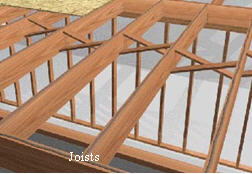 |
| KEYSTONE | A wedge-shaped detail at the crown of an arch. |
| KING POST | In a roof truss, the central upright piece. |
| KNEE WALL | Low wall in upper story resulting from 1 1/2 story building or home construction. |
| KNOB AND TUBE | An early electric wiring system without conduits, where insulated wires are supported with porcelain knobs and tubes when passing through wood construction members. |
| LALLY COLUMN | A steel column used as a support for girders and beams. |
| LAMINATED BEAM | Beam made of superimposed layers of similar building materials (usually wood) by uniting them with glue under pressure. |
| LANAI | A verandah or porch. |
| LANDING | A platform in a flight of stairs. |
| LAP JOINT | Joint produced by lapping and joining two similar members. |
| LATH | A building material used as a base for the application of plaster. |
| LATTICE | Grillwork made by crossing small wooden strips. |
| LEDGER | A horizontal member, which is supported by hangers or by upright posts and carries joists. |
| LINTEL | A horizontal building structural member over an opening, which carries the weight of the wall above it; usually of steel, stone, or wood. |
| LOADS | Live load: The total of all moving and variable loads that may be placed upon a building or home.Dead load: The weight of all permanent, stationary construction included in a building or home. |
| LOAD-BEARING WALL | Building wall designed to support the weight imposed upon it from above. |
| LOUVER | Opening or slatted grillwork that allows ventilation while providing protection from rain, sight, or light. |
| LUMBER | The product of the saw mill and planing mill not further manufactured other than by sawing, resawing, and passing lengthwise through a planing machine, crosscut to length and matched. |
| MANSARD ROOF | A roof with two slopes on each side, with the lower slope being nearly vertical and the upper nearly horizontal.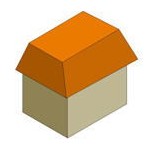 |
| MANTEL | A shelf over a fireplace. |
| MASONRY | General term for brickwork, stonework, concrete blockwork or similar materials. |
| MASTIC | Flexible adhesive for adhering building materials. |
| MATTE FINISH | Finish free of gloss or highlights. |
| MEMBER | A single piece of building material used in a structure. |
| MILLWORK | Finish carpentry work or that woodwork done in a mill and delivered to the site; relates to interior trim. |
| MITER JOINT | Joint made with ends or edges of two pieces cut at 45-degree angles and fastened together. |
| MONOLITHIC | Term used for concrete work poured and cast in one piece without joints. |
| MORTAR | A mixture of cement, sand, and water, used as a bonding agent by the mason for binding bricks and stones. |
| MOSAIC | Small colored tile, glass, stone, or similar material arranged to produce a decorative surface. |
| MUD ROOM | A small room or entranceway in a house where muddy overshoes and wet garments can be removed before entering other rooms of the home. |
| MULLION | Structural support member between a series of windows. |
| MUNTIN | Small bar separating the glass lights in a window sash. |
| NEWEL | A post supporting the handrail at the top or bottom of a stairway. |
| NONBEARING WALL | A dividing wall in a building or home that does not support a vertical load. |
| NOSING | The rounded edge of a stair tread. |
| ON CENTER | Method of indicating spacing of framing members by stating the distance from the center of one member to the center of the next. |
| ORIEL | A large bay window projecting from a wall and supported by a corbel or bracket. |
| OUTLET | Any type of electrical box allowing current to be drawn from the electrical system for lighting or appliances. |
| PALLADIAN WINDOW | A window arrangement with a half-round window on top of a wider rectangular window. |
| PARAPET | Low wall or railing at the edge of a building or home's roof; it extends above the roof level. |
| PARGE COAT | Thin coat of cement mortar applied to a masonry wall for refinement or dampproofing. |
| PARQUET FLOORING | Flooring, usually wood, laid in an alternating or inlaid pattern to form various designs. |
| PARTICLE BOARD | Sheets made from compressed wood fiber. |
| PARTY WALL | Wall common to adjoining buildings in which both home owners share, such as a wall between row houses or condominiums. |
| PATIO | An open court. |
| PEDIMENT | A triangular space formed in the middle of a gable; also used as a decoration above a door. |
| PERGOLA | A garden structure with an open wooden-framed roof, often latticed, supported by regularly spaced posts or columns. The structure, often covered by climbing plants such as vines or roses, shades a walk or passageway. |
| PIER | Support, usually in the crawl space of a home, to support the floor framing. |
| PILASTER | Rectangular pier attached to a building wall for the purpose of strengthening the wall; also a decorative column attached to a wall. |
| PILLAR | A column used for supporting parts of a building or home. |
| PINNACLE | Projecting or ornamental cap on the high point of a roof. |
| PITCH | Pitch is the slope of a roof usually expressed as a ratio of vertical rise over horizontal run. For uniformity, the run is always defined as twelve feet. Therefore, a 6 in 12 roof would have a vertical rise of six feet over a horizontal distance of twelve feet. Roofs with a pitch greater than 4 in 12 are considered conventional roof systems. Roofs with a slope between 4 in 12 and 2 in 12 are considered to be low slope roofs, and roofs with a pitch less than 2 in 12 are considered to be flat roofs. |
| PLASTER | A mortarlike composition used for covering walls and ceilings, usually made of portland cement mixed with sand and water. |
| PLAT | A map or chart of an area showing boundaries of lots and other parcels of property. |
| PLATE | Top or bottom horizontal members of a row of studs in a frame wall; also, the sill member over a foundation wall. |
| PLENUM | The large metal box attached to the furnace from which heating ducts emerge. |
| PLINTH | A square or rectangular base for columns and pilasters. |
| PLUMB | Said of a building member when it is in true vertical position as determined by a plumb bob or vertical level. |
| PLYWOOD | A piece of wood made of three or more layers of veneer joined with glue and usually laid with the grain of adjoining piles at right angles. |
| POLARITY | The correct flow of electricity, which is achieved when the hot and neutral wires of the power supply circuits are connected to the corresponding hot and neutral wires of an appliance or outlet. |
| PORCH | A covered area attached to a house at an entrance. |
| PORTE COCHERE | A covered, drive-through structure that extends from the side of a home, providing shelter for people getting in and out of vehicles. |
| PORTICO | A roof supported by columns; often used at an entry to a building or home. |
| PORTLAND CEMENT | A hydraulic cement, extremely hard, formed by burning silica, lime, and alumina together and then grinding up the mixture. |
| POST | A perpendicular building support member. |
| POST & BEAM CONSTRUCTION | Wall or foundation construction consisting of large, widely spaced posts to support horizontal beams. |
| PRECAST | Concrete shapes made separately before being used in a building. |
| PREFABRICATED BUILDINGS | Buildings or homes that are built in sections or component parts in a factory, and then assembled at the site. |
| PRESTRESSED CONCRETE | Concrete in which internal stresses are introduced of such magnitude and distribution that the tensile stresses resulting from the service loads are counteracted to a desired degree. In reinforced concrete the prestress commonly is introduced by tensioning the tendons. Mostly found in commercial buildings. |
| PRIME COAT | First coat of paint applied to wood or metal to prime the surface for succeeding coats. |
| PRINCIPAL PURLIN | A purlin that is heavier than a common purlin; usually runs parallel to the ridge of the roof and the top plate. The only purlin on each side of the roof ridge. It is framed into and joins the principal rafters, thus providing lateral stability for the building's entire roof framing system and support for a number of common rafters. |
| PURLIN | Horizontal roof members laid over trusses or rafters to support a building's roof decking.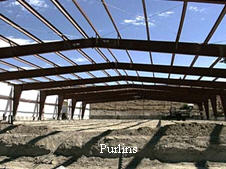 |
| RADIANT HEATING | A system using heating elements in the floors, ceilings, or walls to radiate heat into the room. |
| RAFTER | One of a series of inclined structural members from the ridge of the roof down to the eaves, providing support for the covering of a roof.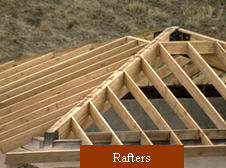 |
| RAIN CAP | A device installed at the upper termination of a chimney or vent to prevent rain from entering the interior of the chimney or vent. |
| REBAR | Steel reinforcing bar. |
| READILY ACCESSIBLE | Available for visual inspection without requiring moving of personal property, dismantling, destructive measures, or any action that will likely involve risk to a home inspector, building inspector or property. |
| RECREATIONAL FACILITIES | Spas, saunas, steam baths, swimming pools, exercise, entertainment, athletic, playground or other similar equipment not inspected by a home inspector or commercial building inspector. |
| REGISTER | The open end of a duct in a home for warm or cool air. |
| REINFORCED CONCRETE | Concrete in which webbing or steel bars have been embedded for strength. |
| REINFORCING RODS | Steel rods or metal fabric placed in concrete slabs to increase their strength. Also called rebar. |
| RETAINING WALL | A wall, either freestanding or laterally braced, that bears against an earth or other fill surface and resists lateral and other forces from the material in contact with the side of the wall, thereby preventing the mass from sliding to a lower elevation. |
| REPRESENTATIVE NUMBER | Quantity of components chosen by a home inspector or commercial building inspector, usually one per room for multiple similar interior components such as windows, and electric receptacles; one on each side of the building or home for multiple similar exterior components. |
| RIDGEBOARD | Horizontal wood framing member to which the top of rafters are attached. |
| RISE | The vertical height of a roof. |
| RISER | The vertical board in a stairway between two treads. |
| ROMEX | Nonmetallic sheathed electric cable. |
| ROUGH-IN | Putting up the skeleton of the building or home. |
| RUN | Horizontal distance of a flight of stairs, or the horizontal distance from the outside wall to the ridge of a roof. |
| SASH | Individual frame into which glass is set; the movable part of a double-hung window. |
| SCRATCH COAT | The first coat of plaster. It is scratched to provide a good bond for the next coat. |
| SCUTTLE | Small opening in a ceiling that provides access to an attic or roof. |
| SEPTIC TANK | A concrete or steel tank where sewage is reduced to liquid and gases by bacterial action. About half the sewage solids become gases that escape back through the vent stack in the house. The liquids flow from the tank into the ground through a leaching field tile bed. |
| SERVICE CONNECTION | The electric wires to the building from the outside power lines. |
| SETBACK | Distance from the property lines, front, side, and rear, to the face of building or home; established by zoning ordinances. |
| SETTLEMENT | Compression of the soil or the members in a structure. |
| SHAKE | A thick wood shingle with an uneven surface; usually formed either by splitting a log into tapered radial sections or by sawing. |
| SHEATHING | Rough covering over the framing of a building or home, either roof or wall, which is not exposed when finish material is applied. |
| SHED ROOF | A roof slanting in one direction.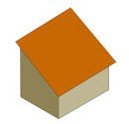 |
| SHINGLE | A roofing unit of wood, asphaltic material, slate, tile, concrete, asbestos cement, or other material used as an exterior covering on sloping roofs and side walls; applied in an overlapping fashion. See Shake and Wood Shingle |
| SHIPLAP | Boards with lapped joints along their edges.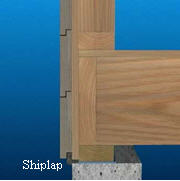 |
| SHORING | Lumber placed in a slanted position to support the structure of a building or home temporarily. |
| SHORT CIRCUIT | The condition that exists when a hot wire comes in contact with a neutral or grounded wire or conductor within a circuit. It should cause the fuse to blow or the circuit breaker to trip. |
| SIDING | A finish covering on the exterior walls of a building or home in the form of a series of horizontal strips or boards; made of such cladding materials as wood or aluminum. The strips are usually applied horizontally with an overlap to provide resistance against the penetration of water. |
| SIDELIGHT | A vertical window beside a door or another window. |
| SILL | Horizontal exterior member below a window or door opening. In frame construction, the lowest structural member that rests on the foundation. |
| SILL-COCK | Water faucet made for the threaded attachment of a hose; also called a hose bibb. |
| SISTERING | Reinforcing a structural member by nailing or affixing a strengthening piece to a weakened piece. |
| SKYLIGHT | An opening in the roof which is glazed with a transparent or translucent material; used to admit diffused light to the building space below. |
| SLAB CONSTRUCTION | A reinforced concrete floor and foundation system. |
| SLOPE | See Pitch. |
| SMOKE CHAMBER | The portion of a chimney flue located directly over the fireplace. |
| SOFFIT | Underside of an overhang such as the eave, a second floor, or stairs. |
| SOIL STACK | Vertical plumbing pipe that carries sewage. |
| SOLE PLATE | The horizontal framing member directly under the studs. |
| SPACKLE | To cover wallboard joints with plaster. |
| SPAN | Horizontal distance between supports for joists, beams, or trusses. |
| SPANDREL | In a multistory commercial building, a wall panel filling the space between the top of the window in one story and the sill of the window in the story above. |
| SPECIFICATIONS | The written or printed direction regarding the details of a building or home not included in the set of working drawings. |
| SQUARE | In roofing, 100 sq ft of roofing material. |
| STACK | A vertical pipe |
| STAIRS | A series of steps. |
| STANDPIPE | A pipe or tank used for the storage of water, especially for emergency use. |
| STEENING | Brickwork without mortar. |
| STILE | Vertical framing member of a panel door. |
| STORM SEWER | A sewer that is designed to carry away rain water from a property, but not sewage. |
| STORY | Space between two floors of a building or home. |
| STRINGER | One of the sides of a flight of stairs. The supporting member cut to receive the treads and risers. |
| STRUCTURAL COMPONENT | A building component that supports non-variable forces or weights (dead loads) and variable forces or weights (live loads) in a building or home. |
| STRUT | A brace or any piece of a frame which resists thrusts in the direction of its own length; may be upright, diagonal, or horizontal. |
| STUCCO | Any of various plasters used for covering walls, especially an exterior wall covering in which cement is used. |
| STUD | An upright post or support, esp. one of a series of vertical structural members, which act as the supporting elements in a wall or partition. |
| SUBFLOOR | Material fastened directly to floor joist below the finish floor. |
| SUMP | A pit in a basement floor to collect water, into which a sump pump is placed to remove water. |
| SUSPENDED CEILING | Finish ceiling hung below the underside of the building or home structure, either floor or roof. |
| SWALE | A drainage channel formed on a property where two slopes meet. |
| SYSTEM | A combination of interacting or interdependent components in a building or home assembled to carry out one or more functions. |
| TEGULAR TILES | Ceiling tiles with recessed edges that allow the tile to hang below the ceiling grid of a commercial building.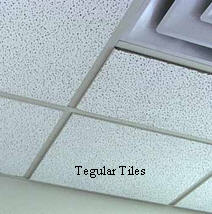 |
| TENSION | Pulling or stretching force. Opposite of compression.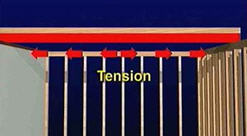 |
| TERRAZZO | Wear-resistant flooring in commercial buildings made of marble chips or small stones embedded in cement matrix that has been polished smooth. |
| THERMOCOUPLE | A safety device on most gas- or oil-fired appliances that shuts off the supply of fuel if the pilot light blows out. Commonly found on furnaces and water heaters. |
| THERMOSTAT | A device for automatically controlling the supply of heat and air. |
| THRESHOLD | Wood, metal, or stone member at the floor within the door jamb. Its purpose is to provide a divider between dissimilar flooring materials, or serve as a thermal, sound or water barrier. |
| THROAT | A passage located directly above the fireplace opening where a damper is set. |
| TIE | A structural member used to bind others together. |
| TIE BEAM | A horizontal timber connecting two opposite rafters at their lower ends to prevent them from spreading. |
| TIE ROD | A rod in tension, used to bind parts of a building together. |
| TIMBER | Lumber at least five or more inches in dimension for posts, sills, and girders. |
| TOENAILING | To drive a nail at a slant with the initial surface in order to permit it to penetrate into a second member. |
| TRANSOM | The bar or horizontal construction that divides a window. More commonly applied to the sash over the door. |
| TRANSOM WINDOW | A narrow horizontal window above a window or door, named for the cross bar on which it rests. |
| TRAP | U-shaped pipe below plumbing fixtures which provides a water seal to prevent sewer odors and gases from entering habitable areas in a building or home. |
| TREAD | The step or horizontal member of a stair. |
| TRUSS | Structural unit of members fastened in triangular arrangements to form a rigid framework for support over long spans. |
| TRUSS RAFTER | Truss spaced close enough (usually 24" o.c.) to eliminate the need for purlins. |
| TURRET | A small tower usually on the corner of a building, most common in Victorian-style homes. |
| U BLOCK | Block which looks the same as a standard block from the front or back, but whose cells are open on the top so that grout can flow outward to the other block on each side. The U Block provides for placement of horizontal reinforcing steel and grout to form a bond beam within the course (ie: layer) where it is used. |
| UNDER-FLOOR CRAWL SPACE | The area within the confines of the building's foundation and between the ground and the underside of the floor. |
| UNDERPINNING | A foundation replacement or reinforcement for temporary braced supports. |
| VALLEY | The internal angle formed by two slopes of a roof. |
| VALLEY JACKS | Rafters that run from a ridgeboard to a valley rafter. |
| VALLEY RAFTER | Diagonal rafter at the intersection of two intersecting sloping roofs. |
| VALVE | A device that regulates the flow of material in a pipe. |
| VAPOR BARRIER | Watertight material used to prevent the passage of moisture or water vapor into and through walls , from dirt floors into crawl spaces, and under concrete slabs. |
| VAULTED CEILING | A ceiling that slopes up to a peak. |
| VENT | A screened opening for ventilation. A pipe or other conduit composed of factory-made components, containing a passageway for conveying combustion products and air to the atmosphere. |
| VENT CONNECTOR | The pipe that connects an approved appliance to a chimney, flue or vent. |
| VENTILATION | The process of supplying and removing air by natural or mechanical means to or from any space. |
| VENT PIPES | Small ventilating pipes extending from each fixture of a plumbing system to the vent stack. |
| VENT STACK | Vertical soil pipe connected to the drainage system to allow ventilation and pressure equalization. |
| VERGEBOARD | The board that serves as the eaves finish on the gable end of a building. |
| VERMICULITE | A natural mica expanded by heat to form lightweight thermal insulating material, used in the expanded state alone as loose fill or as aggregate with other materials. |
| VESTIBULE | A small lobby or entrance room in a house. |
| VITREOUS | Pertaining to a composition of materials that resemble glass. |
| WAINSCOT | Surfacing on the lower part of an interior wall when finished differently from the remainder of the wall. |
| WALLBOARD | Wood pulp, gypsum, or similar materials made into large rigid sheets that may be fastened to the frame of a building to provide a surface finish. |
| WASTE STACK | A vertical pipe in a plumbing system that carries the discharge from any fixture. |
| WATER HAMMER | In water lines, a loud concussive noise which results from a sudden stoppage of the flow. In steam lines, water of condensation which is picked up and carried through the steam main at high velocity. When direction of the flow changes, the water particles hit the pipe walls, emitting a banging noise. |
| WEATHER STRIPPING | Strips of fabric or metal fastened around the edges of the windows and doors of a home to prevent air infiltration. |
| WEEP HOLE | Small holes in masonry cavity walls to release moisture accumulation to the exterior. |
| WIRE GLASS | A type of window glass in which wire with a coarse mesh is embedded to prevent shattering of glass in case it is broken; also, to protect a building against intruders. |
| WITHE, WYTHE | Pertaining to a single-width masonry wall in a building or home. The partition dividing two flues in the same chimney stack. |
| WOOD SHINGLE | A thin roofing unit of wood, usually cut from green wood to stock lengths, widths, and thicknesses, and then kiln-dried. Used as an exterior covering on sloping roofs and on sidewalls, and applied in an overlapping fashion.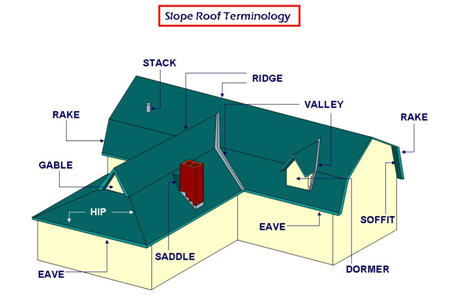 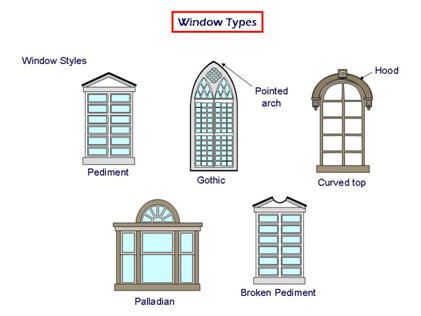 |
| A B C D E F G H I J K L M N O P Q R S T U V W X Y Z | |
BTSSB Bartmann Total Solutions in Steel Buildings
Casa Mondiale - CH-6745 Giornico / TI - Switzerland
Tel.: 0041-(0)91 864 2230 - FAX: 0041-(0)91 864 2235
E-Mail: info@pfetten.ch
URL: http://www.pfetten.com - http://www.dachpfetten.com
http://www.stahlpfetten.com - http://www.wandriegel.com
http://www.purlins.de
Impressum l AGB l Datenschutzerklärung l Copyright© BTSSB All rights reserved